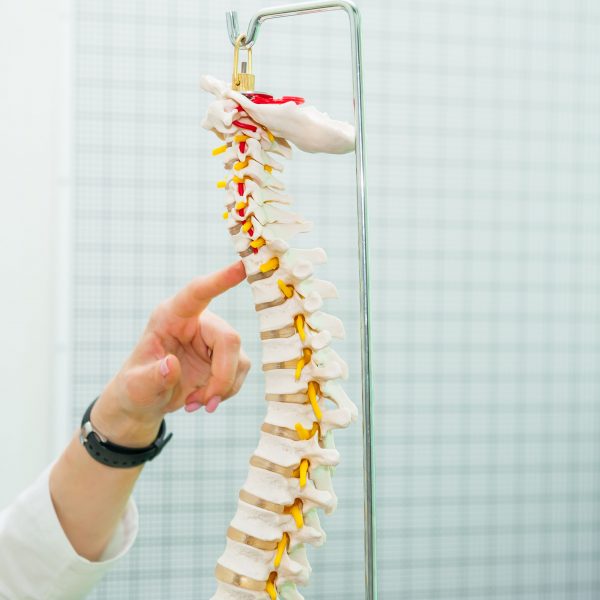Rice is a staple in food industries around the world. We consume around 477 million metric tons of rice annually, making it one of the most widely consumed food in the world after sugarcane and corn. However, in terms of human consumption, it tops as the most important grain in production, providing over a fifth of calories consumed by humans. In the United States, we consume around 3.85 million metric tons a year.
Rice contains a high nutritional value, caloric intake, and potency in carbs, energy, and carbohydrates. However, there are over 40,000 varieties of rice, and each type has different levels of nutrition, flavor, and starch, which is why there are just some types of rice that are healthier than others.
When it comes down to the healthiest types of rice, however, it comes down to two options: parboiled rice and brown rice. What is the difference between parboiled rice and brown rice and which one is the best option if you want to get the most nutrients with less starch and unhealthy, excessive carbs? We answer that question in this article.
How Rice Is Processed
Before we can compare the two, it’s best to understand why various types of rice are so different in terms of texture, starchiness, flavor, and nutritional content even when they come from the same paddy fields. This is partly because of the way the grains are processed and milled.
When rice plants are matured and ready for harvest, the seeds are milled in a rice huller to remove the hull, chaff, or outer husk of each grain of rice. Remove the hull and you get brown rice, the simplest form of rice.
This video shows a much larger scale of how rice processing works. The different kinds of processes can have an effect on the rice product produced, its flavor, and the health benefits you can get from it.
Brown Rice
 Brown rice is known for its healthy properties. Only the husk is removed, which means its bran and germ layers give it a tan color filled with nutrients, minerals, and fiber.
Brown rice is known for its healthy properties. Only the husk is removed, which means its bran and germ layers give it a tan color filled with nutrients, minerals, and fiber.
Because it’s thicker than popular white rice, brown rice takes longer to cook. However, its nutrient-dense grains are rich in vitamins and minerals. The bran gives it a chewy texture and a slightly nutty flavor. It is a 100 percent whole-grain food.
White Rice
 Also known as milled or polished rice, white rice is more processed than brown rice because it gets rid of the bran and germ. While it has a longer shelf life, it has a high starch and carb composition and has compared to brown rice. After processing, it loses around 70 percent of its total vitamins and half of its minerals.
Also known as milled or polished rice, white rice is more processed than brown rice because it gets rid of the bran and germ. While it has a longer shelf life, it has a high starch and carb composition and has compared to brown rice. After processing, it loses around 70 percent of its total vitamins and half of its minerals.
Manufacturers can add more nutrients lost during the milling process by adding a powdered blend of nutrients. This is why some bags of rice come with a warning not to rinse the rice; otherwise, they lose the nutrients listed. White rice has a mild flavor, making it ideal for dishes where the rice mixes with the flavor of other ingredients.
Parboiled Rice

Parboiled rice is, while still inside the hull, partially soaked, steamed, and dried. The process makes it easier to process rice by hand, especially in developing countries where rice equipment are unavailable for all farmers, but gives the rice a yellowish hue.
Parboiled rice is not necessarily brown rice because, from there, the husk can be removed and it can be sold as parboiled brown rice, or it can be milled to be parboiled white rice. It has a gelatinized texture when cooked and is less brittle than average grains.
Because of its boiling process, people tend to mistake parboiled for “pre-cooked,” “converted,” or “easy-cook” rice. The latter is a form of parboiled rice, but not all parboiled rice can be considered “pre-cooked.” Converted rice is boiled even more than usual before being packaged, so consumers can cook it in a few minutes compared to the 20 to 30-minute cooking time of brown or white rice. It has the lowest amount of nutrients and the most fat, carbs, and starch.
However, most parboiled rice is much healthier and almost like brown rice. It’s why half of the world’s paddy production goes to parboiled rice. It takes roughly the same time to cook brown and white rice.
Parboiled Rice vs. Brown Rice

Nutrition
In terms of nutrition, both are superior to white rice because they have added nutrients from the bran and germ. Healthline estimates that a cup of brown rice provides 216 calories, 3 grams of fiber, vitamins B1, B3, B5, and B6, iron, magnesium, zinc, and other minerals that may help wound healing, blood sugar regulation, low fertility, and other conditions. Parboiled brown rice also provides roughly the same vitamins and minerals since it carries the same bran and germ brown rice has.
Some would argue that parboiled rice wins in terms of nutrition because the process causes nutrients on the outer hull (especially vitamin B1) to move to the endosperm, the starchy part of rice. Once the hull is peeled off, those nutrients stay within the grain, making it richer in nutrients. However, what they don’t consider is that during the boiling and soaking process, there really may be some nutrient loss.
Considering that parboiled rice comes in both white and brown, it’s safer to say that the choice comes down to parboiled brown rice and brown rice. It still should be noted that parboiled white rice contains around 80 percent of nutrients as brown rice and is the much better option over regular white rice.
There may be no way to determine for certain which one is better, and it would have to depend on the taste and texture preference of the consumer. However, these two are healthy options suitable for diabetes patients and people maintaining a low caloric amount.
Cooking
Various rice types have flavor profiles, color, length, and texture, that do not work well in all recipes. Brown rice and parboiled rice have different colors and textures once cooked. Brown rice is chewy and has a slightly nutty flavor, while parboiled rice is firmer and less sticky.
Brown rice’s texture works well in dishes such as stuffed peppers, casseroles, stir-fry dishes, and rice pilaf. These dishes can benefit from whole grain rice and its texture. Parboiled rice is good for making fried rice dishes where you don’t want the rice to get mashed when mixed with other meats and ingredients. It’s also a staple in South and Southeast Asia, and some countries in Europe and Africa, so if you want to do a healthier take on some Asian cuisines, you might want to use parboiled rice over white Jasmine rice.
How to Cook Rice
Rice is fairly easy to cook. You can purchase a rice cooker at your local appliance store, but if you don’t eat rice frequently enough to need a rice cooker, you can also cook it on the stove. All you need is a saucepan or a pot big enough for your needs. Here’s how we cook our rice, but take note that others may have different methods.
Some may prefer to add salt, pepper, and spices to their rice when cooking, but it’s OK to cook it plain. The amount of water your rice needs depends on the type of rice used, so be sure to check the label to see the ratio of rice to water needed to prevent your rice from becoming too soggy or still being too hard to chew. Usually, the ratio of rice to water is 1:1, but tougher rice may call for 1:2.
If using a rice cooker, there’s a very low chance of burning your rice as long as you unplug your appliance after it’s finished cooking. If using a stove, be careful about the amount of heat and time used to cook the rice. Burnt rice can be difficult to eat and would be a waste.
Handling Leftover Rice
Cool your leftover rice until it’s warm or close to room temperature before storing it. Store your leftover rice in a clean airtight container in the fridge. If stored properly, it can last for up to a week in the fridge. Leftover rice can be reheated in a microwave or can be used to make dishes like fried rice.
When it comes to nutrition, both brown and parboiled rice offer higher nutritional value than milled white rice. While both are healthy options, if you want more fiber or prefer chewy rice, select brown rice. But if you like firmer rice with more vitamins, consume parboiled rice.
However, despite their high nutritional value, remember that both are still two types of rice, which means either still has a significant amount of carbs and starch. Consuming too much rice could lead to health problems and negate the nutrition you get out of eating healthier rice. Consider eating your rice with a healthy main dish like salmon and a side of vegetables to balance out your meal.






